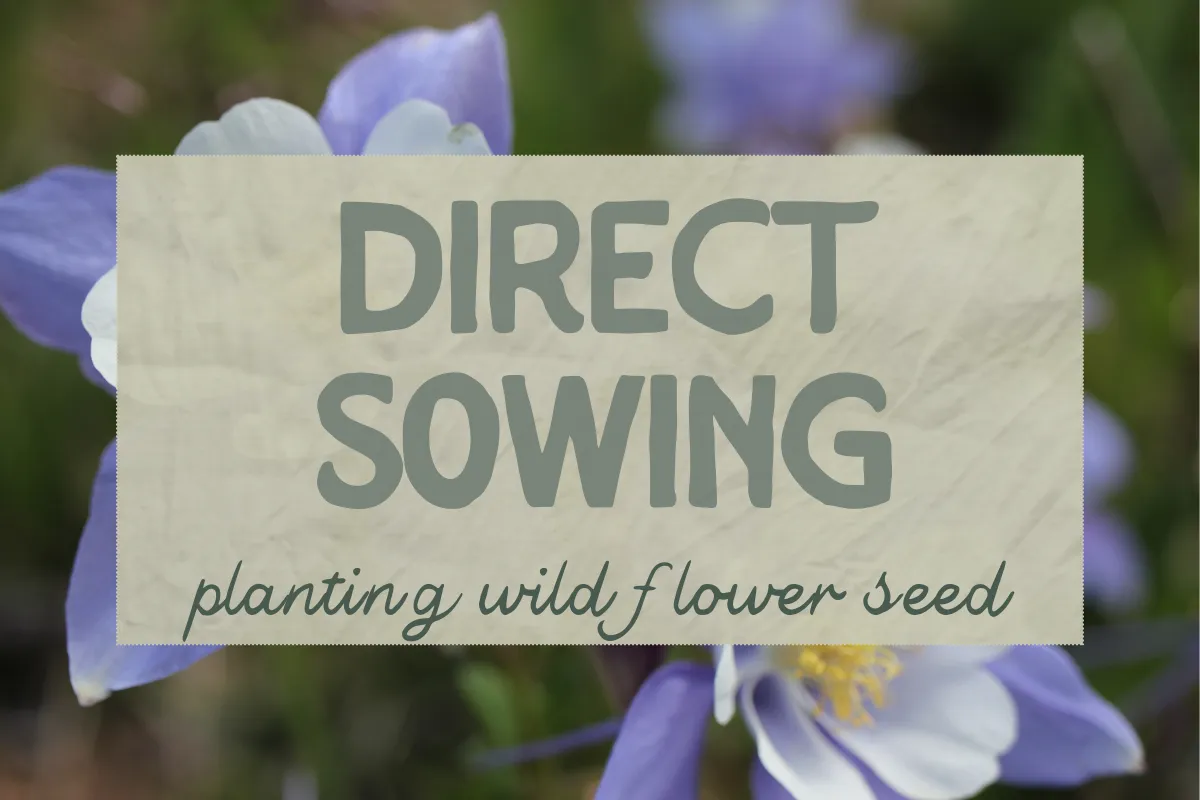
Scatter & Bloom: A Wildflower Lover’s Guide to Direct Sowing

🌼 Direct Sowing: Chaos, Color, and Resilient Blooms
Direct sowing is exactly what it sounds like—spreading seeds directly into your garden or landscape instead of starting them in containers indoors. It’s the easiest, most budget-friendly way to introduce new species, especially for those of us short on time, space, or money.
As a gardener who embraces a bit of chaos, I love tossing seeds around willy-nilly and discovering surprise blooms in unexpected spots. Of course, you can be more methodical—but a little wildness adds magic.

🧠 Before You Sow: Sourcing Tips
Check the species list on premade wildflower mixes. Many include non-native species.
Avoid seeds like Bachelor Buttons, African Daisies, and Baby’s Breath—they’re not native.
Best source: Western Native Seed – mixes by ecoregion and custom options available.
If collecting wild seed:
Follow rules for public lands (BLM, National Forest, etc.)
Always get permission on private land.
Collect from large populations only—avoid lone plants.
For more: Colorado Native Plant Society’s guide

❄️ Timing Is Everything
Fall > Spring for sowing mixes. Native seeds often need cold-moist stratification (winter cycles of freeze/thaw).
Spring-sown seeds requiring stratification may not germinate for a whole year—if they survive.

🛠️ How to Direct Sow on Bare Ground
Rough up the soil with a rake or cultivator to create gaps for seeds.
Spread in two passes:
Half while walking in one direction.
The other half walking perpendicular.
Top lightly with ¼ inch or less of sand or soil—small seeds need light!
Press seeds into soil by walking the area or using a drum roller. Avoid walking on wet soil—it'll stick to your shoes.

🌱 Sowing in Mulched Gardens
Pea gravel mulch is ideal—seeds fall into gaps, seedlings push through easily.
Avoid bark mulches thicker than 4\" if you're trying to establish new plants.
🐦 Protecting Seeds from Birds
Sow just before the first snow—snow buries and presses in the seeds.
Optional: add a thin layer of straw or Penn Mulch to retain moisture and deter birds.
💧 Spring Watering Tips
Keep top 1–2 inches moist during germination.
Adjust watering to your conditions.
Light mulch helps retain moisture.
🌸 Final Thoughts
Direct sowing might not go perfectly the first time—and that’s okay. Try again. Tweak your approach. And remember: we’re here to help!
Stop by Wiggle Worm Gardens if you have questions or want to chat native plants—we love hearing about your growing adventures!
Key Takeaways
Direct sowing native wildflowers is a low-effort, high-reward way to add color and biodiversity to your garden
Fall is the best time to sow wildflower mixes for natural cold-moist stratification
Use pea gravel mulch or bare ground for best seed-to-soil contact and germination
Always verify native species in seed mixes to support local ecosystems
Protect seeds from birds and boost germination with straw or Penn Mulch
Copyright 2023-2025 Wiggle Worm Gardens
Visit Our Sister companies
Fourth Street Farm: edible landscaping and raised bed garden design and installation
Ground Up: Soil health and compost tea
